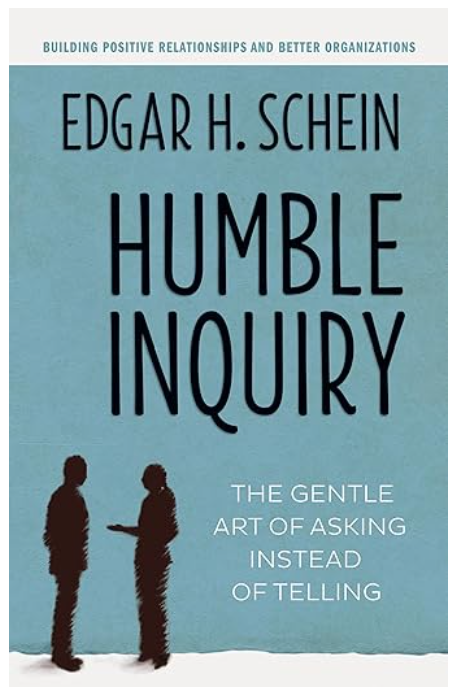Humble Inquiry – How Great Leaders Ask More and Tell Less
The Workplace Problem: Why Do Leaders Struggle to Get Honest Feedback?
Many leaders believe they need to have all the answers—but this mindset creates barriers to trust, innovation, and honest communication.
Employees often hesitate to speak up about problems, fearing criticism, dismissal, or hierarchy. As a result, critical workplace issues go unaddressed, and engagement suffers.
HR professionals and executives must help leaders shift from giving orders to asking meaningful questions.
So how can leaders create a culture where employees feel heard and valued?
What This Book is About
In Humble Inquiry, Edgar H. Schein, an expert in organizational culture, introduces a powerful leadership skill—asking better questions to build trust, unlock insights, and strengthen workplace relationships.
This book explains why leading through curiosity, rather than authority, results in better decision-making, collaboration, and employee engagement.
Key Takeaways for HR and Workplace Leaders
Telling vs. Asking: Leadership Must Evolve – Many leaders default to telling employees what to do, but true leadership comes from listening and learning.
Humble Inquiry is a Mindset, Not Just a Technique – It’s about genuinely wanting to understand others, not just asking for the sake of it.
Three Levels of Inquiry:
Diagnostic Inquiry – Asking fact-based questions to gather information.
Process-Oriented Inquiry – Asking how something happened rather than assuming blame.
Humble Inquiry – Asking open-ended questions that invite reflection and deeper conversation.
The Power of Vulnerability in Leadership – Leaders who admit they don’t have all the answers create psychological safety, making employees feel safe to contribute.
Better Questions Lead to Better Decision-Making – When employees feel valued and heard, they share concerns earlier, leading to proactive problem-solving.
Curiosity Builds Trust and Engagement – People trust leaders who take a genuine interest in their perspectives.
Workplace Tools and Models from the Book
The "Humble Inquiry Leadership Model" – A framework for shifting from directive leadership to inquiry-based leadership.
The "Curiosity-Driven Feedback Strategy" – How to ask for and receive feedback in a way that fosters trust.
The "Active Listening Reinforcement" – Techniques for ensuring leaders don’t just ask questions but truly listen.
The "Psychological Safety Builder" – A step-by-step guide to creating an environment where employees feel safe sharing insights.
Why This Matters for HR and Workplace Leaders
HR professionals and managers must create a culture where employees feel comfortable speaking up. Humble Inquiry provides strategies to:
✔ Train leaders to ask better questions instead of giving commands.
✔ Encourage employees to share ideas, problems, and solutions.
✔ Improve workplace relationships by fostering mutual respect.
✔ Break down silos and increase collaboration through open communication.
How This Connects to Workplace Assessments and Restorations
Many workplace assessments reveal communication breakdowns, such as:
Employees not speaking up about workplace concerns.
Leaders struggling to get honest feedback from their teams.
Low innovation due to a top-down culture where only certain voices are heard.
By applying Humble Inquiry principles, HR leaders can help organizations transition from a command-and-control leadership model to a collaborative, trust-based culture.
How Can You Apply This?
➡️ Are your workplace leaders asking the right questions, or just giving orders?
➡️ Do employees feel safe sharing feedback and concerns, or do they stay silent?
Mastering the skill of humble inquiry can transform workplace communication, trust, and leadership effectiveness.
Where to Buy
Interested in reading Humble Inquiry? You can purchase it here:
📚 Amazon
📚 Berrett-Koehler Publishers

